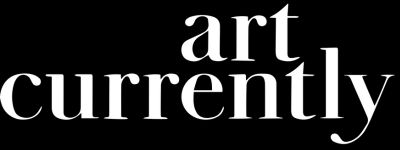Anthony Padilla: Being One with Nature & Art in the City
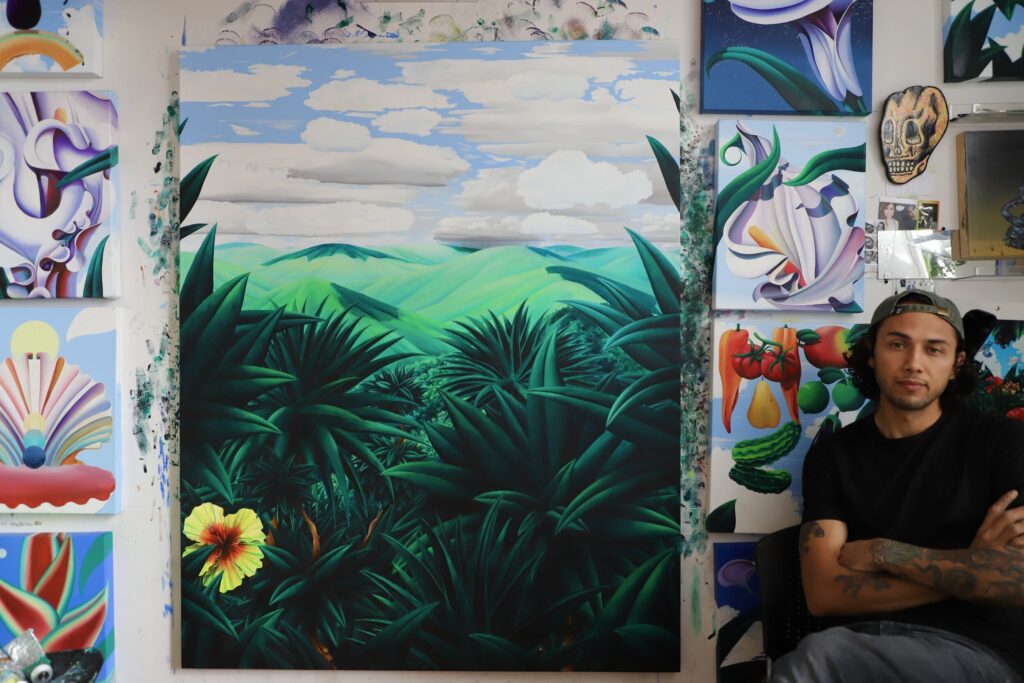
Center painting: Clouds Over the Valley, 2021, oil on canvas, 48 x 60 in
Anthony Padilla's paintings are the perfect combination between abstraction, surrealism, and realism blended with an explosion of colors, detailed figures, and shapes that immerse the viewers into a process of contemplation, guiding them to exotic landscapes- a different reality than most experiences. His works are so faultlessly composed and delineated that it is hard to believe the artist is literally "a self-made artist." Art lovers might think of Georgia O'Keeffe's modernist paintings or have a reminiscent of the imaginary exotic landscapes by post-impressionist painter Henri Rousseau when looking at Padilla's artwork. After following his trajectory through The Honey Pump and carrying on an interview for the magazine, Padilla proved to be much more than an aesthetician.
Born and raised in Dallas, Texas, Padilla had no formal training in art, apart from his "high school training and carrying his sketchbook around just to pass on time." Art didn't become a serious practice until his early 20s when he moved out of his parent's house and had a space of his own with more room to create and explore his ideas. Nevertheless, like most creatives, Padilla's current style as a contemporary landscape artist didn't start until he moved to Bushwick, Brooklyn, six years ago- and as he jokes, "maybe the lack of greenery brought it out on me." Since then, his style has evolved into including animals- Padilla's favorite ones are birds and reptiles, but also, his art has expanded extensively on outdoor walls.
Disregarding the medium, as an artist, Padilla has a clear vision of what his artwork should transmit to his viewers, when asked:
"I want you to stand in front of the painting and transport you to an all-natural space, almost like a portal submerging you from wherever you are. I'd like my work to allow one's distractions such as noises, thoughts, or whatever is going on in your specific location to dissipate those obstructions. What I am hoping you can do when you are standing in front of my art is to be absorbed into it and forget what is going on around you. In the same way, it's meditative for me to create my paintings; I want viewers to look into the distance, then look at my art and be at peace and have a moment of clarity to be reminded of the beautiful world we are a part of."
In 2019, Padilla was first approached to commission a mural in Manhattan for two bridge overpasses in Hell's Kitchen, "Flowers in the City," intended to remind the passerby of our origins and connection with nature. Just recently, in April 2021, he finalized a mural titled "All Natural Substance" at Substance Skate Park for 1% For The Planet. As a passionate environmentalist, painting murals is Padilla's perfect way of bringing awareness to topics like global warming and its impacts on our planet to the forefront, all while remaining connected with the skateboarding community, whether in Texas or New York City.
It is ubiquitous to forget artists themselves have many layers other than creating their art. Padilla's relationship with skateboarding started at the age of thirteen and has been practicing weekly ever since. Skateboarding used to be, at a time, a practice considered a part of the "counterculture," but in recent years, it has influenced the fine arts, fashion, music, and design; becoming undeniably part of our visual culture. Thus, being immersed in skateboarding culture, Padilla not only found a hobby and exercise but a practice that influenced his career in the art world.
Through his art, we can understand the analogy between art and skateboarding as a method. Although not usually used as a comparison, the artist explains the importance of having a discipline as skateboarding to learn valuable life lessons such as persistence, endurance, determination, and the ability to see errors as a natural part of any process.
In a time where most people are still struggling to find meaning, perhaps Padilla's example can be of use. Committing to a practice that we are passionate about, trying and failing as many times necessary until we build a "structure" that feels right for us. In our conversation, Padilla and I talked about how he transitions from canvases to large-scale murals. His passion for environmentalist and socially conscious projects, his relationship with skateboarding, and how this practice has merged into his art.
(Q) Tell us more about your background and how did you get into painting?
I never had any formal training other than art class in high school, but to be honest, I never took it seriously back then. I started painting more formally until I was around 20 years old. Before that, my high school teacher used to say, as long as you are doing something art-wise: drawing, painting, sculpting, or whatever form of creativity, so I would carry my sketchbook because I was always drawing and sketching, just to pass the time. And then it sort of came naturally after that.
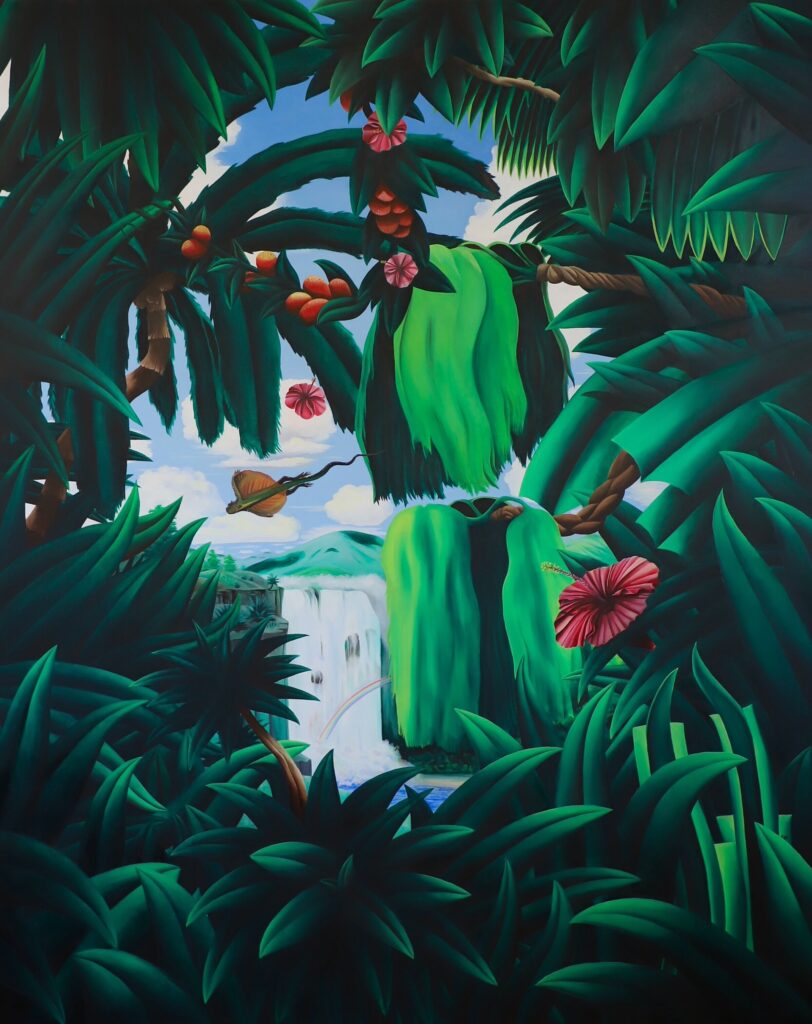
(Q) Your paintings used to be composed of colorful geometric figures. How did you transition into your current style as a landscape artist? What inspired you?
It happened around the time I moved from Dallas to Bushwick, I'd say around three years ago. One day I did two paintings that assimilated landscapes, surreal scenes; the third painting from that series had these abstract fluid shapes that looked like flowers, so I decided to do a whole jungle scene around it. From that painting on, I've followed my particular style.
(Q) How do you twist reality and abstraction in your work?
I like to combine both forms in my art. However, I never want to copy a direct image from something else. For instance, all of the landscapes are made up but will use some allusions or online references and books for the animals and certain flowers because I want them to be recognizable for what they are. As far as selecting which one to choose in the painting, I am more particular about it. Here's where the creative side comes into play because I like to recreate interesting-looking animals or flowers based on their fascinating features. In my creative process, I've realized how interesting nature and evolution are.
(Q) Can you tell us more about your career as a mural artist? When did it start, and how is your creative process different from your other mediums? How does the meaning of your art change when it is transferred to a public space?
It started in 2019. The meaning of my art doesn't change; I still want people to be absorbed into my landscapes. However, what does change is the way in which I get to that intention. Using oil painting regarding an acrylic painting for murals is very different. I like that in murals, I have a larger area to cover, it makes the process more entertaining, but the undertaking is slightly different. The most significant difference is that I am not so thought out of the end result with oil paintings. In the canvas, I will draw the initial sketch, and at the end, 90% will look almost the same. But in the case of the murals, the acrylic dries so fast that I do the background entirely, and then I just start covering it up, and I am okay with that process because I let the murals sort of follow their natural path.
Ever since I started my career as an artist, I've wanted to create oil paintings on canvases because of how easily I can turn them precisely into what I want them to look like in my mind. It's a process that allows me so much creativity. I don't like any sort of rough blends; I want my paintings to have smooth gradients. However, in my murals, I have to let that go because acrylic is hard to blend, and I don't use spray paint. My process when creating murals is more unrestricted; I let it flow. I have an idea in my head, but when I see the actual wall or space, that idea changes and develops. So, to me, the most significant variation is that I am not so concrete as to how I want it to look. Usually, in my other paintings, I already know what the final version will look like from the moment I start creating it.
(Q) Do you believe as an artist, and especially as a street artist, it is essential to collaborate in socially conscious art projects?
Placing more art into the world to convey messages is something positive; if I could, I would paint every wall or provide opportunities for artists to do so. It's a beautiful way to improve our urban environment.
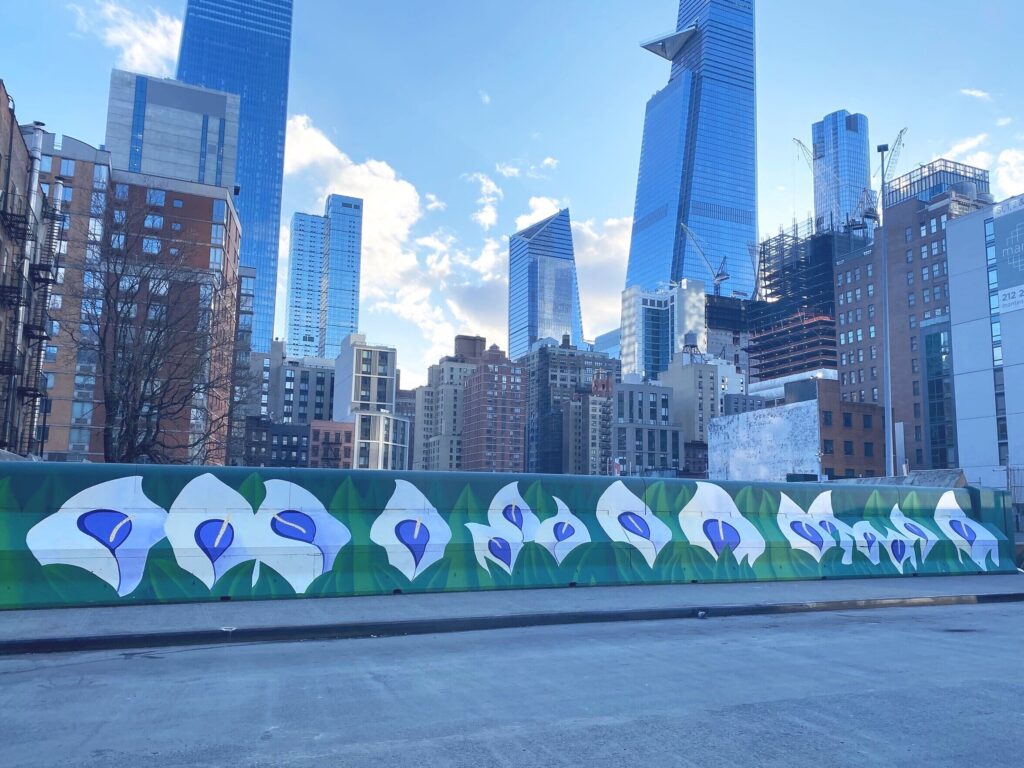
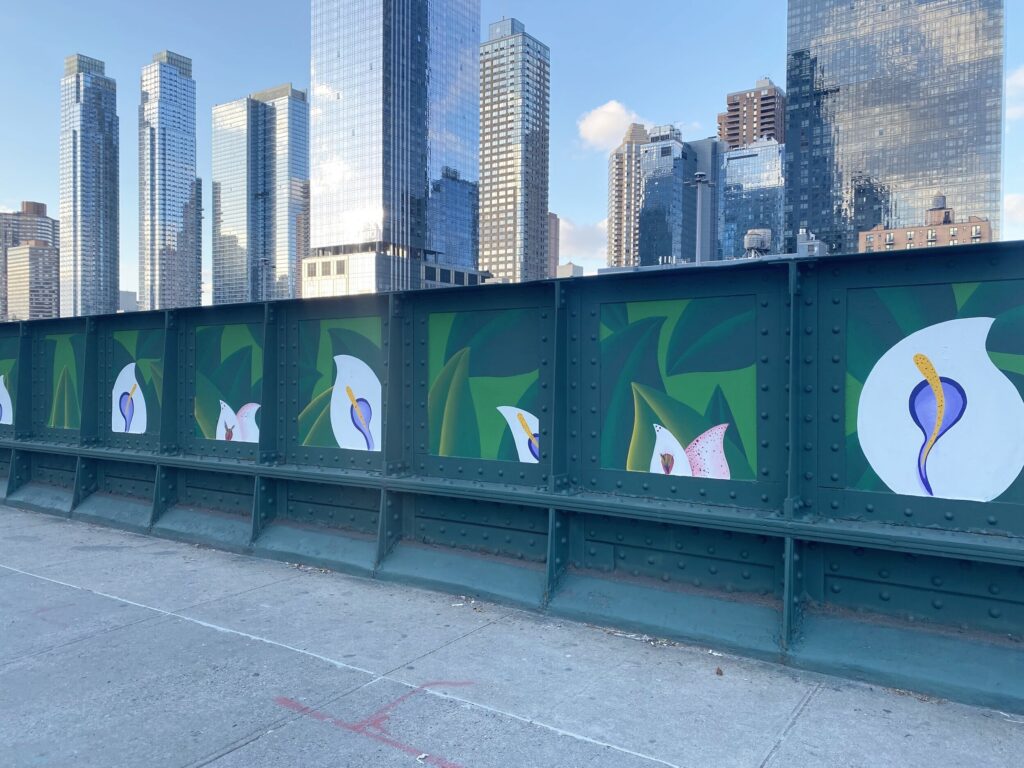
(Q) The murals you've created in skateboarding parks, are they a way to bestow the skateboarding community?
Back home, I am affiliated with a non-profit organization called 4DWN Project; I wanted to contribute to their central location in Dallas, where I created a mural that included some Texas wildflowers and vegetables on the face of their skate park to highlight one of their charities "Harvest Project"- they collect food that generally gets thrown away in the groceries stores in the area, so this organization gathers the food and re-distributes it to the community in the surrounding area.
The last mural at Substance Skate Park for 1% For The Planet came through The Honey Pump, which was related to the planet and environmental topics, which I am very passionate about; I want to bring awareness of the changes happening to our world. I am exploring being eco-friendly as possible with the use of my tools and materials. I wanted to design something that I am already doing, a lovely jungle scene in the middle of Bushwick for people to stop by and take a look at while passing by. It is almost like looking through a small window into one of mother earth's jungle scenes. It was great to be surrounded by the skateboarding community in both cases. I like to combine my skills as a skateboarder and as a painter to retribute to my community.
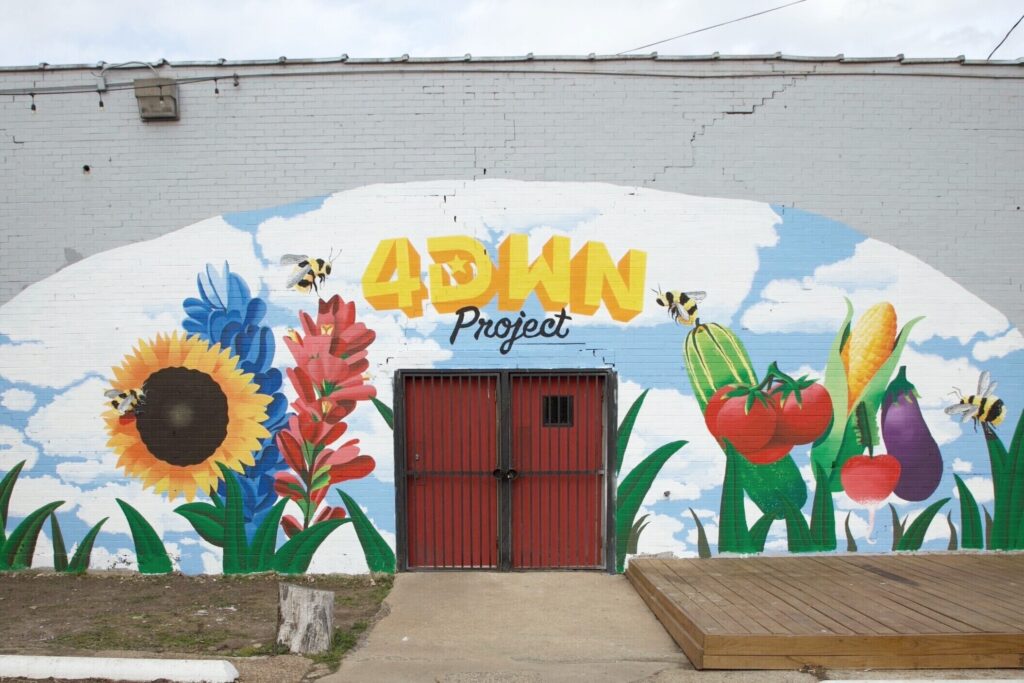
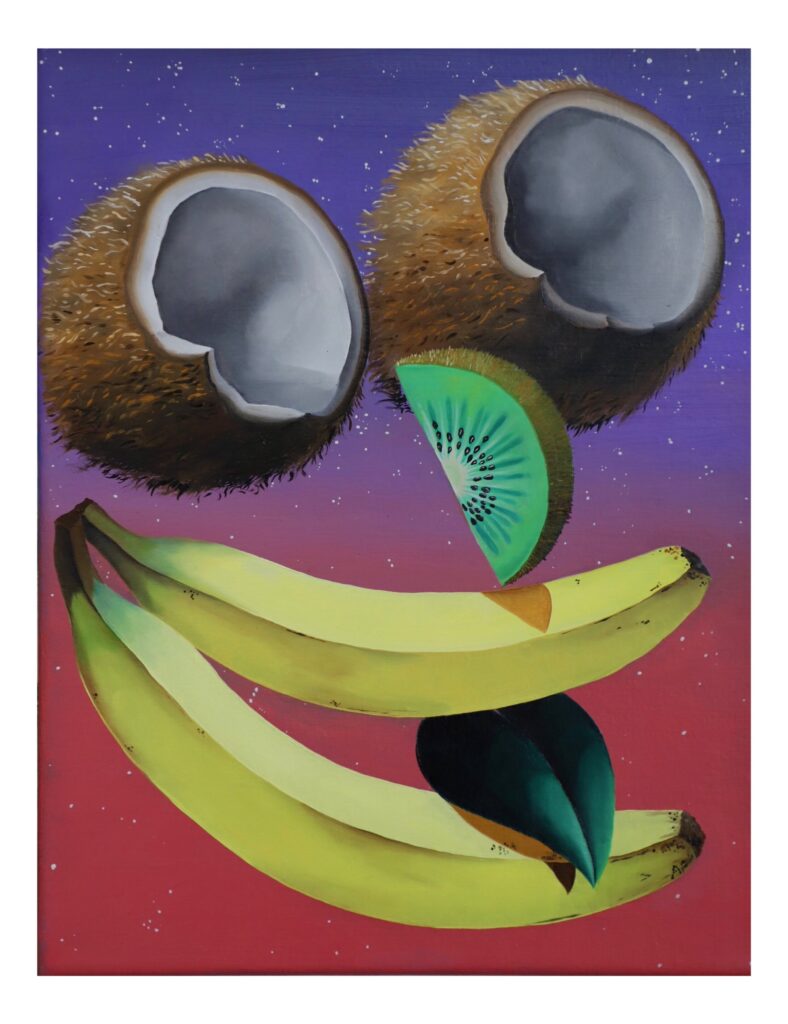
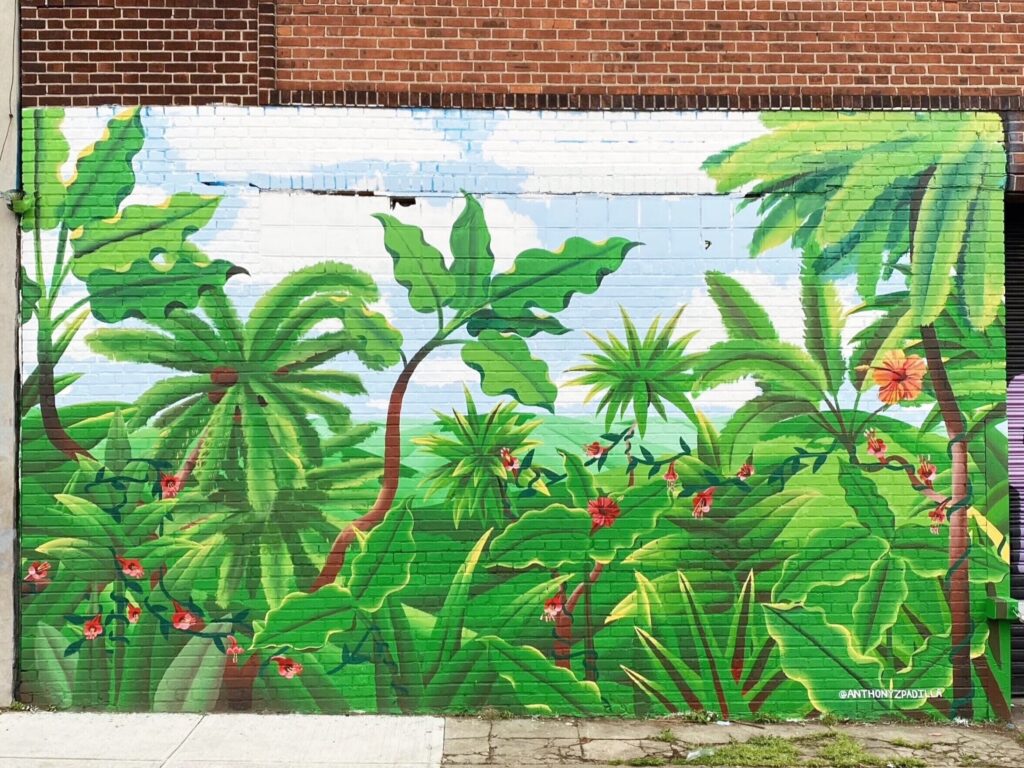
(Q) How would you connect skateboarding and art?
I think that skateboarding and art are very intertwined. On the one hand, skateboarding is a form of exercise. In this practice, you are trying to develop different ways to skate and various maneuvers, especially when doing street-style skating. You want to find obstacles in your way that aren't intended for skateboarding, like handrails, stairs, etc. But the enjoyable thing about skating is when you find something that you wouldn't usually recognize as usable yet, as a skateboard, you find a way to skate on it with your skateboard. That's where I feel the artistic side of skating comes out.
There's also the cultural aspect of it, in which skateboarding influences certain areas of the current culture like fashion, music, and object design that has popularized the sport.
(Q) What is the most functional element of skateboarding that you use for your art?
This is an easy question. I started at age thirteen with skateboarding when I could barely stand on the board, but I knew that I wanted to do it. My friends were big inspirations for me. So, I figured out how to do it with trial and error, jumping on the board, falling, getting back up, trying again, falling, etc., for twenty years. I'd say, other than being injured; I haven't gone a week without skateboarding. It never stops. And the way I compare this with my start with art is similar. There were artists I admired, and I wanted to paint. Ten years ago, as an outsider, I would look at people's paintings and think, "man, I want to be able to create something like that." I wanted to come to a level where I could think of something and know how to do it. I knew it would take a lot of time to put into it.
I feel that with skating, I developed a structure of discipline that I can apply to almost anything and, in this case, to painting. So, for example, I might not like what I am creating. Still, I will always finish it through, or I don't get discouraged whenever I design something I don't entirely appreciate. I simply keep going until, eventually, I produce more artwork that I value instead of pieces that I dislike. This is just from building a solid technique and practice, over and over, to the point where my creative process comes more easily. I believe this personal attribute is derived from skating, and there are many more practices that provide people with this structure.
(Q) As a Brooklyn-based artist, what would you say is your favorite aspect of this city?
As an artist, skateboarder, and individual who lives in this city, I'd say that what I love the most is the amount in which I receive its culture, community, and lifestyle. There's plenty of skateboarding to do, music, culture, art in all its forms- gallery events, street art, etc., and it is constantly changing, which makes the experience even more enjoyable. So, I would say the abundance of all those things is my favorite aspect of this city.
(Q) What are your following projects or goals regarding your career as an artist?
During this summer, I will do a mural for the Audubon Mural Project. The project features different endangered birds throughout the city; I will be creating a specific bird. This project emphasizes another form of climate change threatening our environment and, consequently, the birds. Anything to do with nature where I can contribute by stressing our impact and emphasizing how amazing our planet is, I am all for it. After that, in November, I will have a solo show in Chelsea at Dinner Gallery. As far as my career, I will continue to be a part of projects that allow me to do paintings for a living, hopefully by combining my paths as an oil painter and mural artist.
Images courtesy of the artist.
